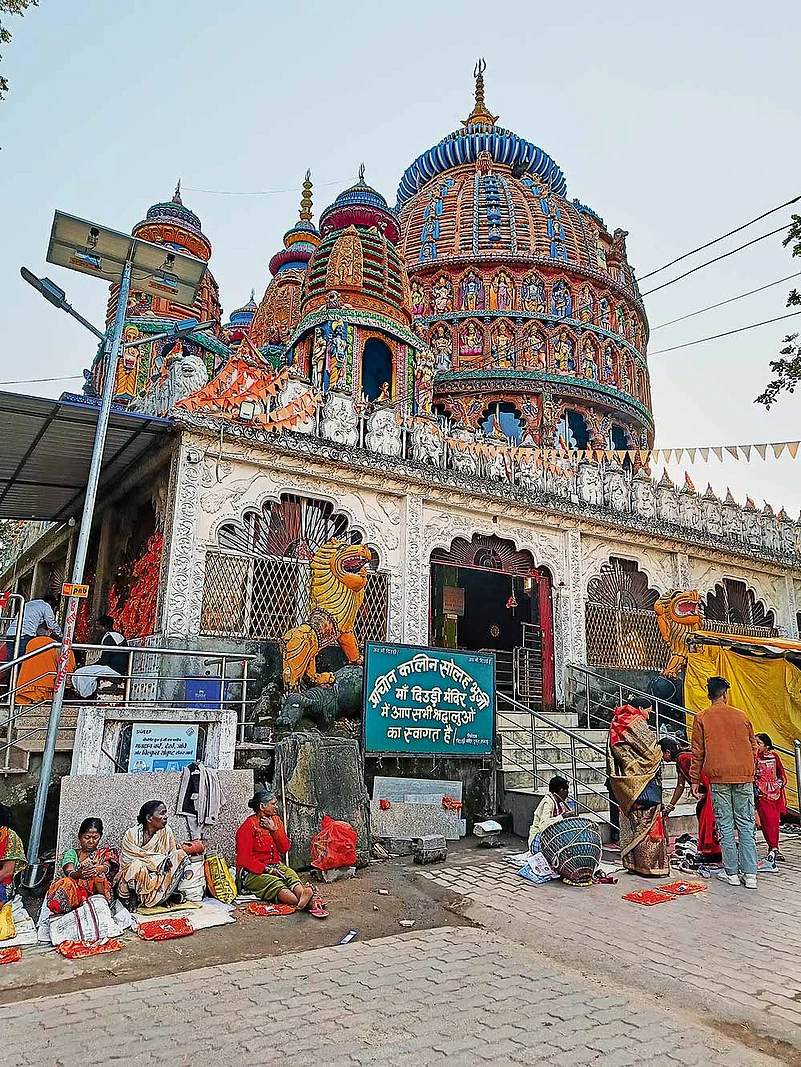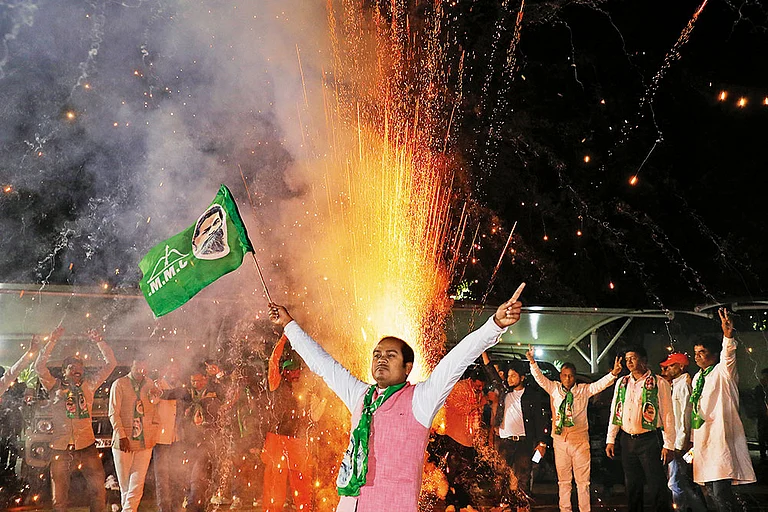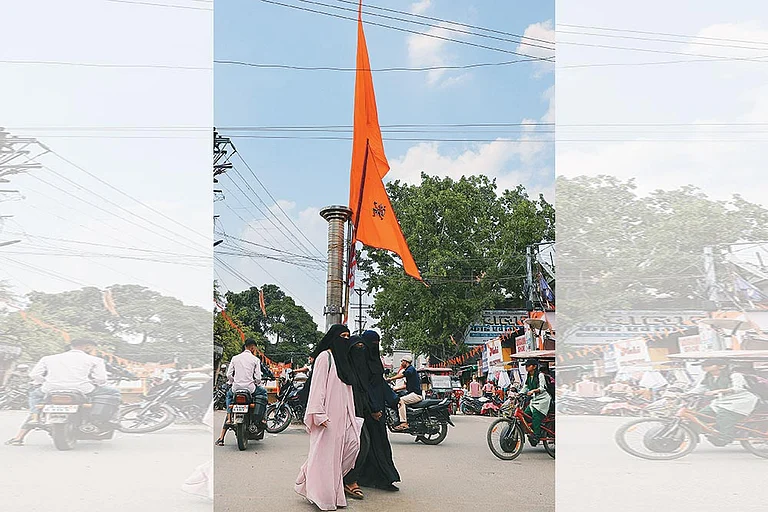Outside the main gate of the Maa Dewri temple in a village near Jharkhand capital Ranchi, Muchiram Machua beats the nagada (drum) while devotees leaving the sacred premises drop notes of Rs 10 or Rs 20 on a red handkerchief laid out on the floor. “(Former Indian cricket team captain Mahendra Singh) Dhoni was here just two hours ago,” says the 45-year-old Muchiram, without letting even a second라이브 바카라 pause break the tempo of his drumming. “He is a regular here. He comes here to worship the goddess. We shook hands when he visited 15 years ago.” In fact, Dhoni라이브 바카라 well-publicised visits have boosted the popularity of the temple like little else could and today visitors from across the country throng the place. “Many come from other parts of the world, too,” adds Muchiram. While the flow of devotees has been a blessing to the local businesses, it has also drawn attention to a raging controversy over ownership and belonging that concerns the deity and the temple, as well as matters of faith and indigenous identity.
In its latest iteration, on September 5, 2024, a group of Adivasis had locked the gate to the temple, asking for a meeting where their stance could be heard by the local shopkeepers. The police got the locks opened in a few hours, and following protests by a non-Adivasi Hindu group that demanded action against those who locked the temple, arrested two Adivasi leaders—Purnachandra Munda and Radhakrishna Munda—on September 8. Those who demanded the arrests claim that the land of the temple was registered under the khatiyan (land deeds) of 1932 in the name of Chamru Panda, a non-tribal who was then the Brahmin priest of Maa Dewri. The other side—those who locked the gate demanding to be heard—insist this could not be true as the land comes under Schedule V of the Constitution of India, which prohibits ownership of such land by non-tribals. “This is a Schedule V area that comes under the customary land tenure system of the Munda tribe,” says Radhakrishna Munda, who was arrested for locking the temple and released on bail a month later. “So, it is just not possible that the land is registered under the name of a non-tribal (Chamru Panda).”
The trail of documentary evidence of ownership is complicated in this case. For example, one report cites a land survey conducted in 1906 to claim that the temple land came under the customary tenure system. The same survey, however, also shows the temple land was registered in the name of Chamru Panda. A subsequent land survey in 1932 mentions only the same name. The local Adivasis question how this land could be registered under a non-tribal name even after the enactment of the Chota Nagpur Tenancy (CNT) Act in 1908, which prohibited the sale of land from tribals to non-tribals.

According to Radhakrishna Munda, the former local king—the King of Tamar—demanded the right to worship in accordance with Hindu practices in 1983-84, after which the local administration allowed Brahmin priests to worship at the temple every Tuesday. “Gradually, the Hindu community dominated the entire temple,” he complains. “Instead of Maa Dewri, they began worshipping Goddess Durga. Her idol was built and then the dome above it. This does not reflect the civilisation associated with tribals. It라이브 바카라 rather more Hindu.” In an interview to a news portal, Sitaram Bari, who was the circle officer of Tamar block in 1984, said the government order allowed the priests to visit the Dewri temple only on Tuesdays, but the number of priests increased over time and they started worshipping along with the Adivasi priests on other days, too.
The temple is 65 km from the highway that connects Ranchi with Jamshedpur and gets its name from Dewri village, which lies between Tamar and Bundu blocks. According to many accounts, the idol is 700 years old and the temple was earlier called ‘Dewri diri’. Diri means a stone in the Mundari language. “These stones used to be kept inside the temple,” says Ramchandra Sahu, a 56-year-old walking among the old stones and rocks strewn all around outside the temple that he came to visit from Gumla, 150 km away. “The small shivlings were made later. The temple was much smaller in the past. I have been coming here for 40 years and have seen many things change with the passage of time.” He believes the temple belongs to the Hindus and that the tribals are claiming ownership only as the indigenous people of the land.
Locals say there was only one stone in the temple라이브 바카라 sanctum until around a hundred years ago. The Adivasis used to worship the stone and their priests were Mundas, whom they called pahan. It was only much later—following the order that began the Tuesday worship rituals by Brahmin priests—that the stone was carved into an idol that has 16 arms. While there are seven or eight Brahmin priests today, 22 pahans work two shifts at the Dewri temple. “Our number will decrease and the number of Brahmin priests will double in the future,” says 32-year-old Mahendra Munda, a pahan. Asked why he feels so, Mahendra says, “When my grandfather was young, the priests would come only on Tuesday. Now, their prayers are conducted every day. Even the pahans chant Brahmin shlokas and mantras. We used to worship Dewri Maa as a stone. Now, Durga Maa is being worshipped as an idol. There used to be a sacred grove where tribals used to gather to offer prayers. We used to call this the Sarna. It has all come to an end. We feel the priests will remove all of us (pahan) from here on the grounds that as nature worshippers we cannot participate in idol worship.”
Mahendra Pahan, a third-generation pahan at the temple, rues that the Adivasi stories about the Dewri temple are gradually becoming a thing of the past as those are being presented in a Hindu-ised form. He wants the district administration to present the Adivasi history of the temple in an inscription so that the visitors could know about it. Manoj Panda, a Brahmin priest, dismisses the Adivasi claim over the temple as “imagined”. “They call themselves nature worshippers and are against idol worship. So how can they call the temple a Sarna worshipping site?” he asks. “This temple belongs to the 10th century and was built by the king of Tamar. Our ancestors have been worshipping here for four generations.” Panda says there are more pahans than Brahmin priests because the local tribals have “adopted our way of worshiping and are also making a living by worshipping”. “We have no problem with that,” he adds.
Jharkhand-based activist and writer Sanjay Basu Mallick argues that the temple has been given a “completely Hindu form” and that it is difficult to convert it back to the traditional mode of worship of the tribals. “When I used to visit the temple with Ram Dayal Munda in 1980-81, there were many stones scattered around the site where the temple has been built now. The local Munda people built the structure of a temple with those scattered stones. Later, the stone image started resembling a woman. From then onwards, the temple started taking shape,” he says, adding that many Buddha idols, too, can be found in the area. Padmashree awardee Bulu Imam, who wrote the book Buddhist Searches in Jharkhand, also believes this could be likely. “Around 200-300 Buddhist sites in Jharkhand were destroyed,” he says.
Mallick suggests that the temple functioning could be handed over to the tribals and their pahans so that the community could benefit from the income generated there. Hindu organisations, meanwhile, claim that Sarna—the Adivasi faith based on sacred groves—has been a part of Hinduism. Even a section of Sarna followers have been organising events of idol worship in Jharkhand. In recent decades, idols of the “Sarna goddess” can be seen in Adivasi prayer halls. This change in the mode of worship can be attributed to their growing affinity towards Hinduism. However, Sarna religious leaders still emphasise on doing away with idol worship because, even though nature is like a mother, they don’t think worshipping nature in the image of a person is the same as worshipping nature itself.
(Translated by Kaveri Mishra)
(This appeared as 'The Stone Goddess' in print)

















